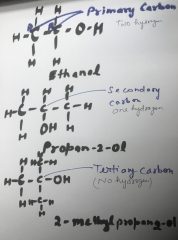Hund’s Rule of Maximum Multiplicity
Have you ever wondered how atoms occupy their electron orbitals? Thanks to Hund’s Rule of Maximum Multiplicity, we have a better understanding of this mysterious phenomenon. This rule describes the energies that shells and subshells within an atoms electron structures experience depending on the actual number of electrons present. Read on to discover more about this fascinating scientific concept.
What is Hund’s Rule of Maximum Multiplicity?
Hund’s Rule of Maximum Multiplicity states that electrons occupy orbitals of equal energy so as to create the greatest total spin. This is done by filling each sub-shell with one electron before any electron is added to a shell with the same principal quantum number but larger orbital angular momentum. This rule applies primarily to atoms and ions in their ground state when they are not subject to any external magnetic fields or other perturbations, which can disrupt or otherwise change the underlying atomic structure.
Hund’s Rule of Maximum Multiplicity suggests that Pairing of electrons does not take place until all the orbitals of a sub-shell are singly filled.
Why Is It Important to Understand Hund’s Rule of Maximum Multiplicity?
Hund’s Rule of Maximum Multiplicity is important to understand because it has implications in many areas of chemistry, including bonding, spectral behavior, and spin states. Knowing how electrons will be placed in orbitals can help us predict the types of bonds that may occur between atoms as well as what types of shapes they will take when bonded. Additionally, understanding Hund’s Rule can also help us explain more complex phenomena such as the structure of transition metal complexes.
What Are The Implications Of Hund’s Rule of Maximum Multiplicity?
Hund’s Rule of Maximum Multiplicity has multiple implications for when studying the atomic structure. Due to the law, electrons will always fill orbitals in a way that maximizes their spin multiplicity. This means that each orbital must have at least one electron before two electrons can enter and occupy a single orbital, which gives us an insight into the way atoms interact and bond with each other. Additionally, knowing how Hund’s Rule applies to different elements can help us explain more complex phenomena such as what causes paramagnetic and diamagnetic trends in molecules.
How To Calculate the Spin and Magnetic Moment For Molecular Orbitals with Multiple Electrons?
The total spin of the molecules, and hence the magnetic moment, is determined by the electrons filling in their orbital. For example, if two electrons each with spin 1/2 fill an orbital they will give it a combined spin of 0 and a total magnetic moment of zero; whereas if three electrons with combined spins of 1/2 fill an orbital they will give it a collective spin of 1, leading to a net magnetic moment. This follows from Hund’s Rule of Maximum Multiplicity – because unpaired spins are favored over paired ones, we can calculate the molecular orbital’s magnetic moment by counting the number of unpaired electrons that were added to each shell and multiplying them.
What Does Hund’s Rule Tell Us About The Chemical Properties Of A Molecule?
Hund’s rule tells us that the unpaired electrons in a molecule can significantly affect its chemical properties. Coupled with Pauli exclusion principle, this can explain the stability of molecules with different numbers of unpaired electrons and their relative spectra due to spin-orbit coupling effects. For example, some molecules are more stable in triplet states (three unpaired electrons) as opposed to singlet states (one unpaired electron). This is because in a triple state, the lone pairs are higher in energy and thus less likely to interact with other molecules and form bonds.
I hope you have read the topic Understanding Hund’s Rule of Maximum Multiplicity.
Read about
Pauli’s Exclusion principle
Quantum Mechanical Model Of Atom


